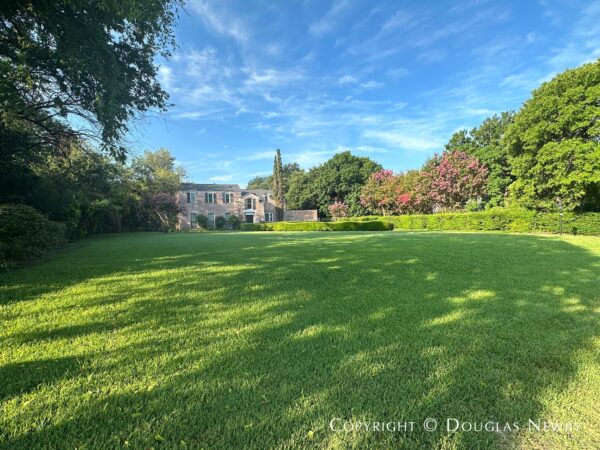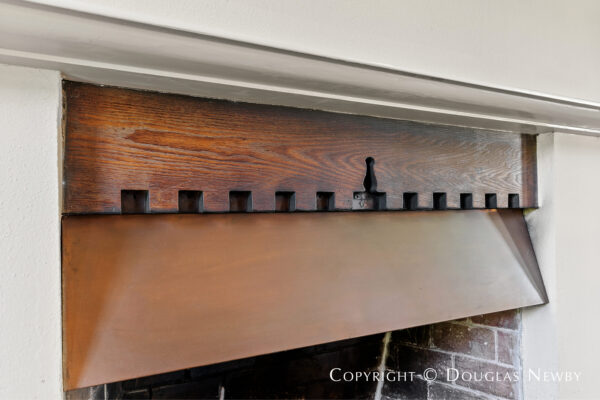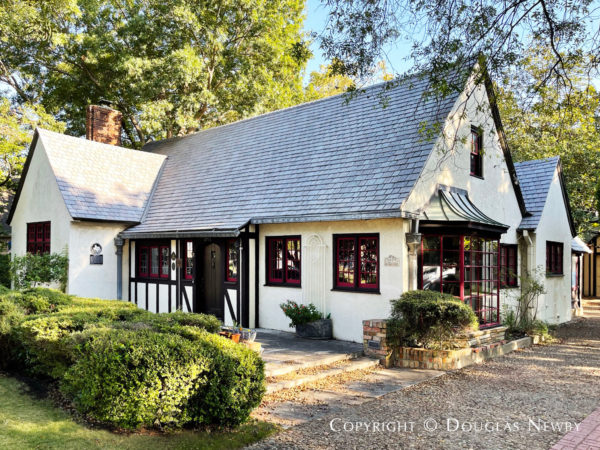
Many think preservation deed restrictions and easements diminish the value of a property. In many cases in Dallas neighborhoods the opposite is true. The historic and architecturally significant homes I have sold with preservation deed restrictions and facade easements implemented by the seller have protected the homes and helped the homes sell for more than their appraised values.
Not Successful are Calls for a Tyrannical Government Approach to Restrict a Few Homeowners and Treat Them Differently Than Their Neighbors
Many preservation groups and individuals think the solution to stopping teardowns is government regulations for targeted properties that reduce the property rights of their owners in relationship to neighboring properties. It is not realistic to implement laws that pass on the cost of preservation to small groups of owners of historic houses because preservationists as a group do not want to incur the cost of preservation. Imposing restrictions on just a few targeted homeowners of historic homes is even more unrealistic in the Dallas neighborhoods of Highland Park, University Park and Dallas. Much more effective and proven to be successful are preservation-minded sellers and buyers who create transactions that protect the homes.
Weed Out Wholesale Lot Buyers and Focus on Buyers Who Love the Home
Preservation deed restrictions and facade easements weed out lot buyers and shift the focus to home buyers who love historic and architect-designed homes. Having just the dimensions of a lot, lot buyers can quickly make a cash offer when that lot comes up for sale. A cash offer with a quick closing is often compelling to a seller which preempts home buyers who like the land but love the house. It is these home buyers who will pay the same amount of money for the land as a lot buyer, but will also pay additional money for the house. However, these home buyers need a chance and some time to learn about the historic house.
What About a Small House on a Huge Lot?
This historic home in 6292 Mercedes is on one of the largest lots in a very desirable neighborhood in Wilshire Heights.
Preservation advocates and builders also think that whenever there is a small house on a huge lot, the house will automatically be a teardown. However, 6292 Mercedes Avenue has a small 2,600 square foot home on a large, two-thirds of an acre lot and it was successfully sold at a price above the appraised value with preservation deed restrictions that will keep the historic and architecturally significant home from being torn down.
6292 Mercedes Avenue and 3211 Mockingbird Lane are Both Small Houses on Huge Lots That Sold and Are Protected
Two architect-designed historic Dallas homes, one a Dallas modern home at 6292 Mercedes Avenue in Old East Dallas and the other a Normandy style cottage at 3211 Mockingbird Lane in Highland Park sold and are good case studies. While 5,000 and 10,000 square foot homes designed by prominent architects on similar size lots have been torn down, these two homes will not be torn down.
Living room and staircase of David Williams designed home at 6292 Mercedes.
Living room that architect Mark Lemmon designed at 3211 Mockingbird.
Architectural and Historic Attributes of David Williams Designed Home at 6292 Mercedes Prompted a Sale with Preservation Deed Restrictions
Pine trim with dental moulding expresses frontier artisanship of David Williams designed Texas modern home 6292 Mercedes.
This historic and architecturally significant home in Dallas has desirable architectural qualities that the seller recognized and attracted homebuyers. These are the type of attributes that buyers need to know about a home to help save the home from being torn down.
The home at 6292 Mercedes was designed by architect David Williams who is considered the godfather of the Texas Modern style of architecture. The working drawings were done by O’Neil Ford, another modern architect of iconic status. This home is well documented in journals and books over the last 90 years as the first Texas Modern home. This home also influenced the design of Dallas modern homes across Texas and has influenced the work of many Dallas architects.
Architect Mark Lemmon Designed Home Also Protected by Front Facade Easement
Architect Mark Lemmon was inspired by his time in Normandy when he designed this home for his family.
The historic and architecturally significant home at 3211 Mockingbird Lane designed by architect Mark Lemmon is another good example of a small house on a large double lot in Highland Park that sold above its appraised value and was protected by a deed restriction and front and side facade easements. If this facade easement is violated, a $1 million penalty goes into effect. The buyers were thrilled to be able to purchase an architecturally significant home designed by Mark Lemmon, especially the very home Mark Lemmon designed for his own family where they lived for 40 years. It is in Highland Park across Mockingbird Lane from SMU where Mark Lemmon built the Highland Park Methodist Church, Perkins Chapel and several other buildings on the SMU campus in University Park. The buyer is renovating and expanding the home and would never think of tearing down this Mark Lemmon-designed home, so the deed restrictions were easily accepted. The home sold with a facade easement that has a $1 million penalty if the easement is violated.
Facade Easements of Historic Homes are a Wonderful Tool to Save Homes
The beauty of front facade easements are that they protect the most visible elements of an architecturally significant and historic home. If the front facade and roofline are protected, it is virtually impossible to tear down the historic home. Further, the easements can be negotiated to include many things a buyer may do to the house such as renovate or expand it. Both of these Dallas homes will be renovated and expanded, but the original facade of the homes are protected, protecting the architecture and history of the homes. In addition, the more money spent on the renovation and expansion of a historic home, the less likely the home will be torn down in the future.
The Key to Preservation Are the Sellers of Historic Homes
The owners of both 6292 Mercedes and 3211 Mockingbird first contacted me years ago to ask how they might protect their homes from being torn down when it came time to sell. Both families knew they would live in their homes for many years to come; however, I know their enjoyment of their homes was even greater knowing there was a good vehicle in place to save the homes from destruction when it came time to sell their architecturally significant homes. In both cases, we never spoke about it again until years later, when the owner of one home, now a widower, and a widow, the owner of the other home, told me that it was time to place our preservation plans into action. Both of these significant homes sold for more than their appraised values and with preservation deed restrictions. This is a victory for the seller and buyer of both of these historic and architecturally significant homes. It is also a good reminder that private transactions save more historic homes than imposed government regulations.
Lead photo: by Douglas Newby. Architect David Williams designed home at 6292 Mercedes saved with preservation deed restrictions.

















